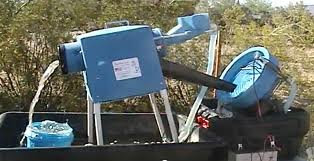A true sample is a small sample of a mask which represents the average composition of the mass or simply stated truly representative of the bulk, uniformity of composition and particle size of the boat material are the key features which lead to selecting the processes required to generate true samples.
Both lots of materials for saddling come in many forms from mick solids like crushed or for scraps circuit boards for recycling to sludge slurries and solutions from industrial processes.
To maximize uniformity of composition fault materials are most often process prior to sampling.
For example scrap metal lots are melted to form alloys for leech to take all the metals into solution for analysis. When the ball contains solid particles imaginas ation for mechanical mixing is a sampling technique employee to create a uniform distribution of particles so that each sample taken from the mixed will represent the average composition.
The uniformity of composition of the starting material greatly affects the amount of reduction needed for true sample
Highly uniform materials require less reduction. fundamental principle of good sampling is to gradually reduce the bulk simultaneously with a gradual reduction in the size of the particles.
Larger sample sizes are required with larger particle size distributions of the bulk. Therefore it is of great value to crush and grind the sample to allow for taking smaller reliable sample. The sample is then mixed thoroughly to obtain a mixture that is homogenized.
For example when salt is completely dissolved into a solution, the solution is thoroughly mixed so that any droplet will contain the same concentration of dissolved salt. in order to get the same amount of thorough mixing with solid particle mixtures, the solid particles must be ground small enough and extensively mixed prior to sampling.
Each type of material for sampling and analysis has optimum ratios for the finest relative to the size of the sample. These ratios must be determined experimentally. middle of the blended and split test samples are taken from lots and sent for analysis.
Essay samples are then taken from the test samples which typically require further grinding and splitting. there are a number of traps that can produce misleading results that karen handling should avoid.
cross-contamination for one sample to the next could occur if sampling equipment is not cleaned adequately between life. care must be taken to collect all of exhaustion crushing grinding or handling fine materials that some does have different metal concentrations than the bone.
Fine particles may also pick up or lose moisture while passing through sampling equipment although they may not appear wet they may contain enough moisture to affect results so this should be accountable.
When samples reach the essay lab they may have segregated so the test sample should also be blended again and split properly.
The ipmi recognizes the importance of this technology to the precious metals community and has published and made available several books on this subject. The sampling and analysis committee of the ipmi also publishes guidelines in this field
Video Precious Metals Analysis For Sampling


























